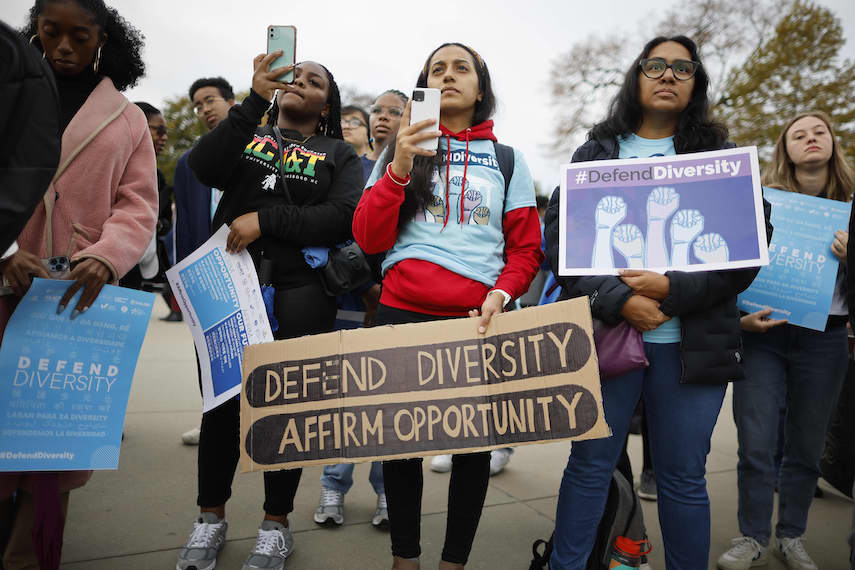In his 2020 book, “The Tyranny of Merit: What’s Become of the Common Good?” the political philosopher and Harvard Law School Professor Michael Sandel tackles and convincingly topples the idea of meritocracy, and America being one. The notion that successful people got there solely based on their individual merit, and effort, he says, has shaky-at-best underpinnings and also has contributed to the polarization that has beset the country over the past eight years.
“Even a fair meritocracy, one without cheating or special privileges for the wealthy, induces the mistaken impression that we have made it on our own,” Sandel writes. “Besides being self-deluding, such thinking is corrosive of civic sensibilities. For the more we think of ourselves as self-made, the harder it is to learn gratitude and humility. And without these sentiments, it is hard to care for the common good.”
I’ve thought back to Sandel’s arguments throughout the ongoing clash over elite college admissions, which Sandel, who joined Harvard´s faculty in 1981, examines with dismay in his book. The Supreme Court´s rejection of the use of race-conscious admissions at colleges set off a flurry of protests and speculation over how admissions offices would conform to the new law without sacrificing the diversity that is crucial to an enriching college experience.
Yet diversity takes many forms. And Affirmative Action as it functioned at the University of North Carolina and Harvard, the two schools named in the case, deserved tough questioning.
Largely lost in the post-ruling conversation, for instance, was Affirmative Action’s alleged deleterious effects on Asian students, who Harvard, the plaintiff argued, penalized by way of low scores on plainly subjective “personal ratings.” The court’s majority agreed, writing in its opinion that “Harvard’s consideration of race has resulted in fewer admissions of Asian-American students,” making the assertion that race is never a negative admission factor unable to “withstand scrutiny.”
And while news outlets published reams of data highlighting the dramatic overrepresentation of wealthy students on prestigious campuses, they seemed less eager to ask how effective race-conscious admissions were at aiding the most disadvantaged minority applicants rather than affluent ones.
The debate over legacy admissions practices that followed the Supreme Court’s decision made clear just how big of a mess college admissions has become. Minority advocacy groups promptly sued Harvard over its use of the practice, and the Education Department late last month opened an investigation into whether the school discriminates by favoring children of alumni. In response, some argued that legacy admits do bring a sort of diversity to campus under the shaky justification that their presumed worldliness introduces classmates from less rarefied backgrounds to the ways of the elite.
There are sturdier arguments in favor of legacy admissions, including data that they’re on average better qualified than non-legacy competitors and, less objectively, that the sense of continuity they bring to a school bolsters its sense of community (and, of course, its coffers).
Less justifiable is that the children of alumni are four times as likely to be admitted than applicants with nearly identical stats. Supporters of legacy admissions defend them as merely tipping the scales in such cases, but a 4:1 ratio is too severe at a school like Harvard, where 39% of recent students came from families in the top 5% of income earners.
What the fracas over admissions shows is that by striving to perpetuate the meritocracy, elite colleges have exposed its hollowness. The many, convoluted working parts that constitute a supposedly “holistic” admissions process have undermined the common good that Sandel advocates.
They’ve done this in part by attempting a late-stage cure for ailments that handicap all but the most privileged American students long before they apply to college. Prestigious private schools have made modest strides in diversifying their student bodies, but like top-tier colleges disproportionately cater to the affluent. The best public schools are still concentrated in well-to-do neighborhoods.
The 169% rise in tuition and board fees between 1980 and 2020, adjusted for inflation, is another obvious hurdle to many potential students. Attempts to explain it away by citing the concurrent rise in financial aid fails to address the discouraging impact of that initial sticker shock.
How can colleges ensure racial and economic diversity going forward?
More aggressive recruiting in working- and middle-class communities is a first step. A well-planned expansion of the AP and similar programs would also help level the playing field by giving bright students of modest means a chance to show their full potential. More widespread promotion of need-blind and other generous financial aid packages, and a less cumbersome path to getting them, is also overdue.
All three changes would help American colleges move toward Sandel’s desire for “a common good beyond the sorting and the striving.” And that would benefit all students offering an enormous range of merits.

